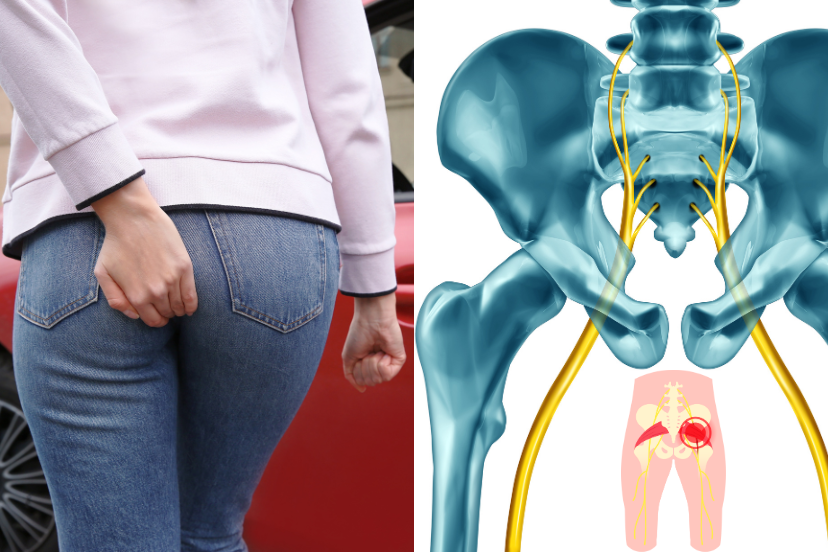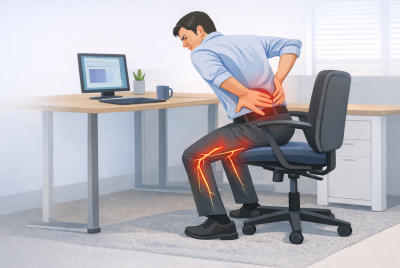Greater Sciatic Foramen
Dive into the intricacies of the greater sciatic foramen, its pivotal role in human anatomy, and its impact on movement and comfort. Dive in now! Understand its functions, and learn its importance in maintaining health and preventing discomfort!
Understanding the Greater Sciatic Foramen: A Comprehensive Guide
The Greater Sciatic Foramen is a vital structure in human anatomy, serving as a passage for essential nerves and vessels between the pelvic cavity and the lower limb. A comprehension of its structure, function, and importance can illuminate its crucial role in maintaining seamless movement and preventing discomfort, underlining its significance in overall human health and well-being.
Introduction to the Greater Sciatic Foramen
The Greater Sciatic Foramen plays a crucial yet often overlooked role in our bodies, acting as a gateway for many vital structures. This key component ensures the smooth movement and absence of discomfort by allowing nerves and vessels, notably the sciatic nerve, to pass through, connecting the pelvic cavity to the lower limb. A deeper exploration into its significance, structure, and function uncovers its indispensable contribution to our mobility and overall comfort in our daily lives.
Definition of Greater Sciatic Foramen
The Greater Sciatic Foramen stands as a crucial anatomical opening located within the pelvic bone, allowing for the transition of pivotal structures like nerves and blood vessels between the pelvic cavity and lower limb. Acting as a critical conduit, it facilitates various necessary movements and functions in daily life, playing an instrumental role in ensuring seamless and pain-free movements. A profound understanding of this structure can provide insights into our body’s intricate network, allowing us to appreciate the symphony of coordinated activities that occur within us every moment, ultimately leading to enhanced well-being and comfort.
Importance in the Human Body
The Greater Sciatic Foramen serves as a vital gateway for critical nerves and vessels, including the sciatic nerve, which is notably the largest nerve in the human body. It maintains a critical role in orchestrating communication and coordination between different body parts, ensuring the optimal function and health of the human body. By understanding its importance, we can appreciate how it enables the smooth relay of signals between the body segments, contributing significantly to the maintenance of balance and regulation within the body’s physiological processes. Recognizing its role can elevate our awareness regarding body mechanics and internal harmonization.
Anatomy of the Greater Sciatic Foramen
To truly grasp the workings of the Greater Sciatic Foramen, a deep understanding of its anatomy is pivotal, especially for individuals experiencing sciatica.
Location and Structure
Positioned strategically in the posterior section of the pelvis, the Greater Sciatic Foramen is meticulously structured by an intricate arrangement of bony landmarks and ligaments, forming a resilient and complex structure. It’s this strategic placement and elaborate construction that guarantees optimal functionality and connectivity among different anatomical entities, providing a robust framework that facilitates the seamless interaction of various components. Understanding the meticulous architecture of this foramen is crucial in comprehending its role in connecting diverse anatomical structures, allowing them to function in unison, contributing to the body’s overall harmony and stability.
Components and Contents
Housing essential structures like the sciatic and pudendal nerves, along with gluteal vessels, the Greater Sciatic Foramen plays a pivotal role in the maneuverability and functionality of the lower limbs. A detailed understanding of the components contained within and their respective interactions is paramount for acquiring a comprehensive perspective on the body’s mechanics. Knowing how each component contributes to our mobility and function can shed light on the intricate interplay occurring within, fostering a profound appreciation for the delicate balance and coordination intrinsic to our anatomical design ultimately enhancing our grasp on the complexity of human anatomy.
The Relationship between Greater Sciatic Foramen and Sciatica
Comprehending the interaction between the Greater Sciatic Foramen and sciatica is vital for managing the condition effectively and ensuring overall well-being.
How it contributes to Sciatica
Irritations or compressions occurring within the Greater Sciatic Foramen can significantly contribute to the development of sciatica, presenting a spectrum of symptoms, such as pain and weakness along the nerve pathway. Recognizing this relationship is vital, emphasizing the necessity for heightened awareness and proactive measures to maintain nerve health and avert complications. By exploring the intricate relationship between the foramen and sciatica, we gain insights into preventive strategies and awareness of potential triggers, allowing for a proactive approach to maintaining nerve health and avoiding detrimental impacts on overall well-being.
Signs and Symptoms of Sciatica
Characterized by sharp, radiating pain often extending down one leg, accompanied by sensations such as tingling or numbness, the symptoms of sciatica require early recognition for effective management. Swift identification and response to these symptoms can lead to timely intervention, mitigating the risk of progressive damage and promoting recovery. Knowledge of the signs and symptoms is crucial, as it empowers individuals to seek appropriate care promptly, preventing the escalation of the condition and facilitating the maintenance of nerve health, overall contributing to enhanced quality of life and well-being.
Managing Sciatica
Managing sciatica can be daunting, but adopting the right strategies can substantially ease the pain and enhance the quality of life.
Effective Exercises
Regularly participating in exercises, notably stretching and strengthening activities like yoga and Pilates, can significantly enhance mobility, relieve pain, and diminish inflammation, acting as effective strategies for managing sciatica. The integration of such exercises not only aids muscle development and flexibility but also fosters overall well-being and resilience against the condition. Cultivating a routine centered around such activities can lead to substantial improvements in muscular balance and alignment, promoting optimal body function and reducing the likelihood of nerve compression, hence mitigating the risk of sciatica.
Lifestyle Modifications
Implementing lifestyle modifications such as using ergonomic furniture and maintaining proper posture can effectively relieve pressure on the sciatic nerve and alleviate associated symptoms. The incorporation of such simple daily adjustments can have a profound impact on the management and prevention of sciatica symptoms, underlining the significance of maintaining a balanced and mindful lifestyle. By embracing such modifications, individuals can create an environment conducive to spinal health, reducing the risk of nerve impingement and contributing to overall well-being and comfort.
Medical Interventions
In instances where sciatica symptoms are severe or persistent, exploring medical interventions, including medications, physical therapy, or, in some cases, surgery, may be essential to address the underlying causes and attain relief. Pursuing various treatment avenues, guided by professional advice, can result in a tailored and effective treatment plan, optimizing long-term health and comfort. Exploration and implementation of the appropriate interventions are crucial in alleviating symptoms and addressing the root causes, enabling the restoration of function and well-being.
The Importance of Seeking Medical Advice
Securing professional advice promptly is crucial in managing symptoms efficiently and avoiding complications.
When to Seek Help
Promptly seeking professional advice becomes essential when self-care measures fail to alleviate symptoms or when symptoms worsen. Early and adequate intervention can thwart long-term damage and ensure the sustenance of overall health and well-being. By recognizing the need for professional guidance, individuals can ensure the timely addressing of their conditions, preventing the progression of symptoms and promoting optimal health through informed and appropriate care approaches.
Diagnostic Approaches
Healthcare professionals employ diverse diagnostic techniques, encompassing physical examinations and imaging studies, to discern the underlying cause of sciatica and prescribe suitable treatment options. A thorough and individualized diagnostic approach is paramount for realizing optimal therapeutic outcomes, enabling the identification and addressing of specific issues contributing to the condition. By adopting a meticulous approach to diagnosis and treatment, healthcare providers can offer personalized and effective care plans, facilitating the attainment of long-term relief and enhanced quality of life.
Frequently Asked Questions (FAQs)
Can sciatica be cured completely?
While sciatica symptoms can often be alleviated through various interventions and lifestyle modifications, achieving a complete cure may depend on individual circumstances and the underlying cause. Consistent lifestyle modifications and adherence to professional advice are paramount in managing and potentially overcoming this condition.
How long does it usually take for sciatica to resolve?
The resolution of sciatica is highly individual, ranging from weeks to several months, depending on the severity and underlying cause. A combination of lifestyle changes, therapeutic interventions, and, at times, medical treatments contribute to the improvement of symptoms and overall recovery.
Is walking good for sciatica?
Indeed, walking can be highly beneficial for sciatica, aiding in maintaining mobility and reducing inflammation. However, it’s vital to be mindful of one’s body limits to avoid overexertion and potential aggravation of symptoms. Moderation and gradual progression are key in integrating walking effectively for sciatica management.
Can poor posture cause issues in the greater sciatic foramen?
Absolutely, poor posture can induce muscle imbalances and compress nerves, affecting the structures within the foramen and potentially leading to conditions such as sciatica. Maintaining proper posture and ergonomic practices is essential in preventing undue stress on the foramen and preserving its functionality.
Can regular stretching prevent sciatica?
Regular stretching can significantly aid in maintaining flexibility and preventing nerve compression, thereby mitigating the risk of developing sciatica. A consistent stretching routine can foster muscle balance and spinal alignment, contributing to optimal nerve health and function.
Greater Sciatic Foramen – Conclusion
In conclusion, exploring the Greater Sciatic Foramen reveals its crucial role in human health, particularly in relation to conditions like sciatica. By maintaining optimal health through regular exercise, proper posture, a balanced lifestyle, and seeking professional advice when needed, we can live a life free of discomfort and full of vitality. Understanding this anatomical structure emphasizes the importance of awareness and proactive management to ensure a pain-free and functional life. It’s crucial to embrace a holistic approach to health, combining knowledge, preventative measures, and lifestyle adaptations to safeguard our well-being and enhance the quality of our lives.
Disclaimer
Please note that the information provided in this article is for informational purposes only and should not replace professional medical advice. If you’re experiencing sciatica pain or any health concerns, it’s advisable to consult a healthcare professional for proper diagnosis and treatment.
👉 Explore more:




